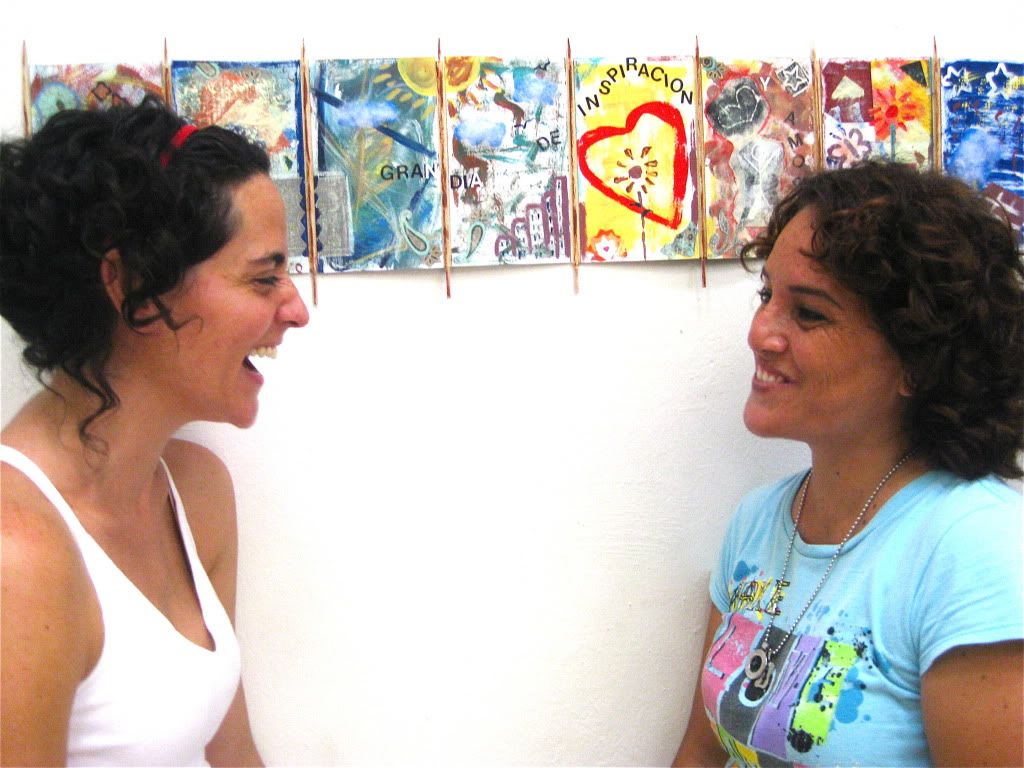 Since my years first as a student and then as a teacher, I always have had the feeling that summer is a time for rest and relaxation. However, in the years since I was the director of The ArtsLiteracy Project and then of Habla, summer has been the busiest time of the year. In the summer we work with teachers from around the world who are on their vacations but still eager to join other educators in sharing ideas and developing in their teaching practices. I do teach during the year as well, but summer for me is a time to offer what I've learned to other educators and to learn from them in return.
Since my years first as a student and then as a teacher, I always have had the feeling that summer is a time for rest and relaxation. However, in the years since I was the director of The ArtsLiteracy Project and then of Habla, summer has been the busiest time of the year. In the summer we work with teachers from around the world who are on their vacations but still eager to join other educators in sharing ideas and developing in their teaching practices. I do teach during the year as well, but summer for me is a time to offer what I've learned to other educators and to learn from them in return.
This summer I had the opportunity to learn from several extraordinary educators who taught at this year's Habla Teacher Institute titled Travelling Beneath the Surface. The idea behind this institute was that we would explore what it means to teach deeply--to really wrestle with ideas with our students and explore what it means to teach "in-depth" in our disciplines. Educator Ted Sizer uses the term "less is more" to describe how teachers need to avoid the idea that they must cover a body of material (usually extensive) over the course of the year. Rather we as educators should delve deeply with our students into a few topics. In this way we help our students to wrestle with complex issues and think profoundly rather than superficially about ideas and issues.

My colleague Cynthia Weiss demonstrated this by leading the teachers at the Teacher Institute through an intense and multi-layered process of creating collages. To begin, Cynthia gave a brief presentation about the history of the collage and showed different possibilities from artists such as Matisse and Picasso. In this presentation she provoked us to think about collages through the lens of elegance by offering the following definition:
Elegance is the attribute of being unusually effective and simple. Essential components include simplicity and consistency of design, focusing on the essential features of an object.
Typically we think of collages as an assortment of disparate elements, which indeed they are. Cynthia, however, refocused us on the need to approach creating a collage with the idea of simplicity in mind so the collage wouldn't become merely a random assortment of paint and paper.
Cynthia then took us to a classroom where she had prepared a variety of arts materials organized neatly into two stations: a station with various paints and a station with different types and sizes of cut paper. She demonstrated how we might play with the paper and paint to create surfaces for our collages. Then she let everyone go to "just play . . . don't think to much, experiment!" Quickly everyone became entranced in the process of creating the foundations for their collages. As the day went on participants were completely immersed in their processes, losing track of time and even place. As presenters we had other talks and workshops planned, but watching the teachers work we decided to let the day unfold naturally with a focus on only the collage-making (luckily, all the presenters work collaboratively and we have the flexibility to adjust the schedule in any way we see fit). The day ended and the teachers stayed, hard at work, concentrating on the little world in front of them on their tables.
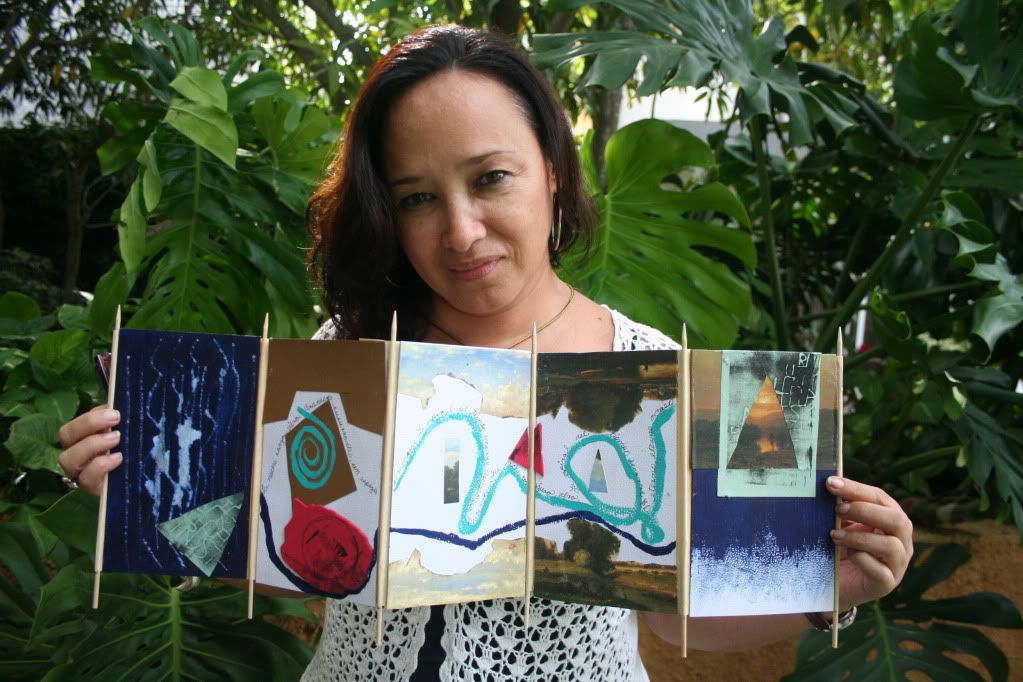
We dedicated another day that week to collage-making. The co-director of Habla, Marimar, turned to me and said, "What about teaching practice? This is a teacher institute, we need to talk about pedagogy, not just be immersed in an artistic process!"
She was absolutely right. As you can see from the photographs, the products were stunning, and most of the teachers attending the institute had no artistic background whatsoever. I was interested in how Cynthia, as an educator, facilitated a process that led to such compelling work. What was going on in her head before and during the workshop? What choices as a teacher did she make to help the group reach such a level of quality? The questions seemed to have implications for the larger field of education:
What can we as teachers do, what do we have in our power, to help students achieve excellence in their work?
After we finished creating the murals, in front of all the teachers I interviewed Cynthia about her pedagogy. She pointed out five pedagogical choices she felt were critical for the success of the project:
1. Modeling for possibility. It's important for students to see models of what might be possible. Modeling might take three forms: showing models from professional artists, modeling the tools that might be used, or providing models of student or teacher work. Cynthia stresses it's important not to show a model and say, "This is what your work needs to look like." Modeling is only a means of opening doors to the imagination to help the students create their own unique work.
2. Selection and organization of materials. Cynthia limits the materials and colors to help create a common aesthetic across all the artistic products. After the materials are selected, Cynthia organizes the materials into various stations. This order creates a safe space in which the students can take their own creative risks.
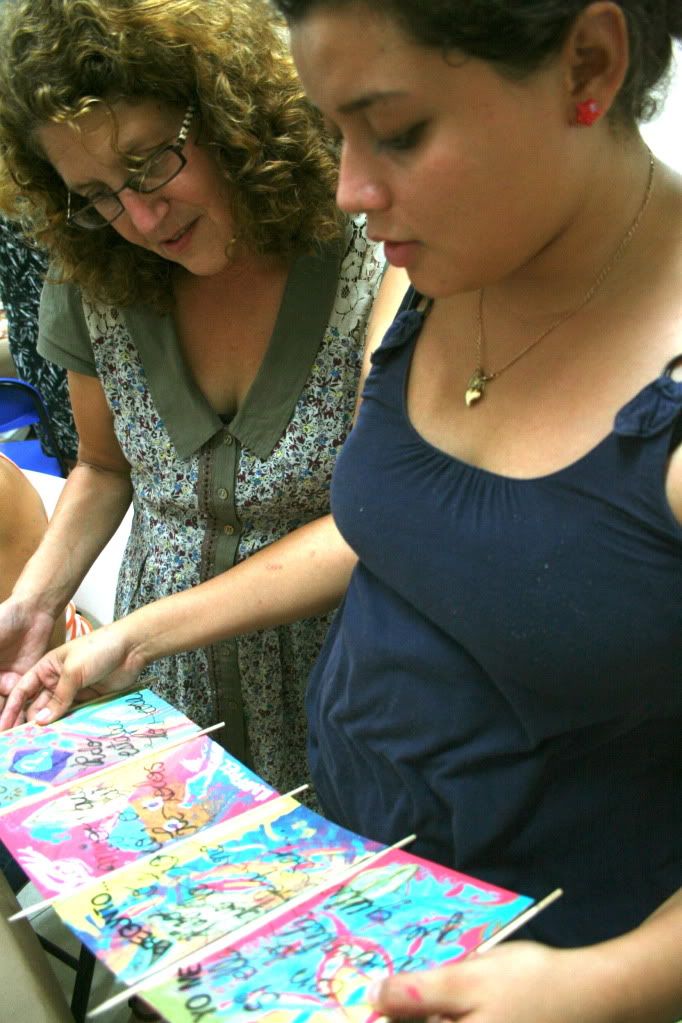
3. Applying a gentle touch. Teacher institute participant Donald Niedermayer used the term "gentle touch" to discuss how he teaches yoga. When Donald's students are attempting a difficult position, Donald gently touches them to help them reach further. Cynthia applies a similar technique when participants became frustrated or stuck. She sits with them at their physical level, praises them for what seems to be working, and then offers gentle questions to help them find the solutions to a given artistic problem.
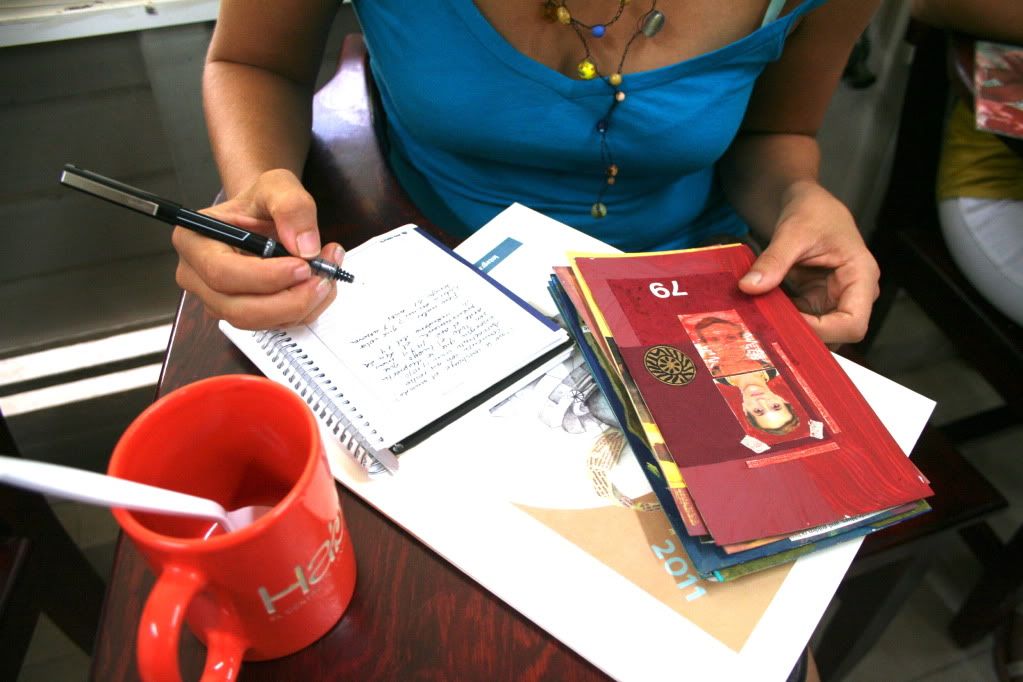
4. Reflecting along the way. In the middle of the collage process Cynthia often asks participants to stand back and look at their own and each other's work asking them the question, "What do you notice about someone else's piece?" Another time Cynthia had the participants sit down with their collages to write a reflective piece in response to their visual work.
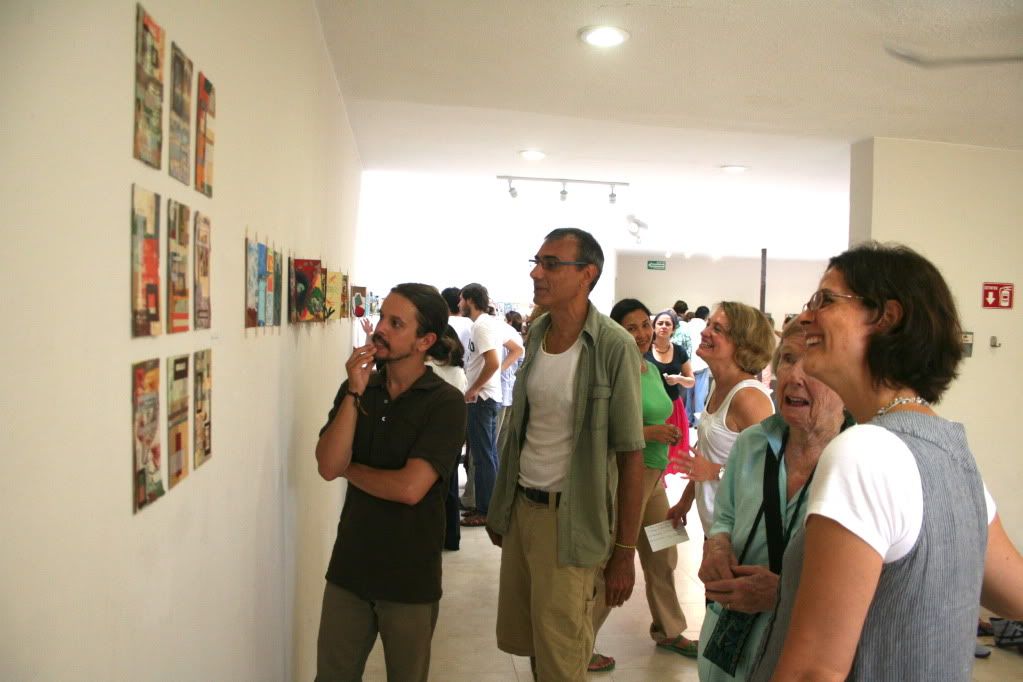
5. Exhibiting publicly. Everyone knows their work will be part of an exhibit for the community. This helps to build a sense of common urgency as everyone works together towards a clear deadline. In addition, each person will have the opportunity to show and discuss their work with visitors who haven't been part of the workshop.
If elegance is about "being unusually effective and simple," then Cynthia's teaching was a clear demonstration of how teachers can teach the most complex of processes with an intelligence and grace that helps all learners to achieve extraordinary work.
Read more about Habla's annual teacher institute here.
A special thanks to the other "elegant" presenters at this year's institute: Patricia Sobral, Arnold Aprill, Charly Barbera, and Laura Riebock.